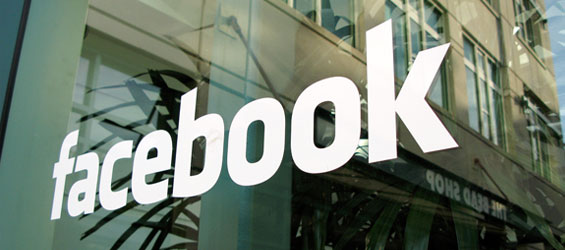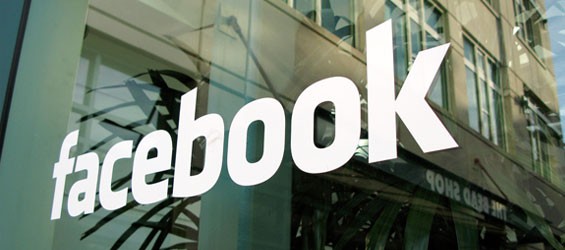Top 10 Do’s & Don’ts That Every Nonprofit Should Know for Facebook

With Facebook being the largest social networking site in the world, it’s no wonder why an overwhelming majority of nonprofits list Facebook as their primary social media platform. Not only can Facebook connect your cause – and increase the visibility of your fundraising efforts – to millions of people around the world, but Facebook also directly offers resources to nonprofit organizations to help them use the site.
Creating a Facebook Page for your organization right away may sound like a great idea, but setting it up is literally the last thing you’ll want to do.
Why? Nonprofit organizations have considerations and unique challenges when it comes to social media marketing. There are conversations that are necessary well before you jump into creating a Facebook Page, and nonprofits need to consider and discuss the following for starters:
• Resources: Who will be responsible for content creation, daily monitoring and engagement? Will there be a chain of command for writing, editing and posting? Are there individuals who can fill in when stakeholders are out of the office?
• Budget: Facebook is a pay-to-play model, with a minimum boost spend of $5 per post if you want anyone to see your content – even those who already Like your Page. Does your nonprofit have an allocated budget specifically for Facebook? If not, where will those funds be derived?
• Social Media Policy: Without a governing policy for administrators and employees alike, a nonprofit organization can open itself up to HR issues internally – and externally, an online reputation crisis can erupt. You can avoid that by making sure everyone in your organization understands what is acceptable and what is not – on both their professional and personal accounts. It also addresses the consequences of violating the terms and protects your organization from a legal standpoint.
In Part II of this blog series we’ll go in-depth on the subject and provide you with a free social media policy template to download for your organization to use as a draft. To be notified by email when that’s available, just subscribe to our blog below.
If you’re ready to create a Page for your nonprofit, here are the Top 10 Do’s and Don’ts of Facebook for Nonprofits:
The 5 Do’s…
Create a Formal Strategy: Before you create a Facebook page, you need to establish a plan. A social media strategy is a formal document that outlines which platforms make sense for your nonprofit, based on who you’re trying to reach and connect with. It’s meant to evolve and be updated as your community increases, new campaigns are needed, and so on.
Schedule Updates: Experiment and observe to figure out which days of the week and at what times your audience is most likely to engage on Facebook. Since you won’t have Facebook Insights to view yet, we recommend looking at your Google Analytics account to find out when referral traffic from social media is at its highest. Using a platform like BufferApp, Oktopost or Hootsuite makes scheduling posts in advance simple.
Create and Share Valuable Content: Inspire your fans with stories they’re likely to share. Build a relationship with people by posting  content that is engaging and unique. Follow the 80/20 rule: 80% of your content should be valuable resources, inspirational or shared content, 20% can be self-promotional, for fundraising, or other content about your organization. It’s easy to find other organizations or news articles that relate to your cause, but it does take time to search for it. Dedicate a few hours each week to this, and your fans will appreciate it!
content that is engaging and unique. Follow the 80/20 rule: 80% of your content should be valuable resources, inspirational or shared content, 20% can be self-promotional, for fundraising, or other content about your organization. It’s easy to find other organizations or news articles that relate to your cause, but it does take time to search for it. Dedicate a few hours each week to this, and your fans will appreciate it!
Fundraise: Facebook can be highly effective for fundraising initiatives. Show your fans why you need their support by sharing stories and photos. Celebrate fundraising milestones and thank your supporters, even mention them by name if possible. It’s really important to demonstrate impact: where will the money go and how can efforts be measured? This kind of information will make users want to donate because they can actually see the difference they’re making – and be able to share it with their friends.
Boost Your Posts: Promoted posts are an effective and economical way to increase the visibility of your content to those who already Like your page AND their friends – since organic reach on Facebook is non-existent – and people are more likely to trust organizations that one or more of their own friends already Likes. (Note that Facebook Ads Manager and Power Editor offer more ‘advanced’ options. If you’re interested in learning more, just let us know.)
And The 5 Don’ts!…
Don’t Create A Personal or Group Page: When creating a Facebook for your organization, use the “Pages” function. Facebook Pages gives you a lot of great options to help you manage your profile and content. With Pages you can analyze the behavior of your fans, which you can use to alter your methods and audience.
Don’t Just Let Facebook Happen: Your Facebook Page won’t do the work for you; you need to put time and effort into it. Be proactive and reactive by asking your fans questions or asking them to share, comment and like. Invite followers to engage with your content. So, non-profits need to determine in advance who will take on these daily responsibilities.
Don’t Duplicate Your Website: When filling out the “about” section of your page, do not just copy and paste information from your website. Use compelling, thoughtfully drafted copy. Not only is this great for SEO, but it adds value to your Facebook Page that makes it unique from your website. After all, what’s the point of having a presence on social channels if all content is exactly the same as your website?
Don’t Ignore Comments & Feedback: Responding to comments and messages on Facebook is essential, whether they are positive (praise) or negative (criticism). In fact, 100% of negative comments should be addressed immediately, which shows that you’re organization cares and is listening! Answer as many questions as you can in a timely manner, even if the question has been answered previously. Create a loyal community on your Facebook page by starting and being a part of the conversation.
Don’t Post The Same Type Of Content Over & Over: Posting the same type of content all the time can bore or annoy your fans, possibly causing them to “unlike” your page. Keep your followers engaged by posting a variety of content using all types of media. Post images, fun facts, quotes, stories, videos, articles, blog posts and whatever else you think will keep your audience interested.
Liqui-Site serves numerous nonprofit clients in Rockland County – and across the country. We assist non-profit organizations with strategy development, social media policy, and building a community on the social channels that make sense for each respective organization. Facebook can be an essential aspect of digital marketing, and we can help you understand the resources needed to market effectively on social media.
Wait! Did you just think to yourself, “our organization doesn’t have a social media policy…”. Not a problem. In Part II of this blog series we’ll go in-depth on the subject and provide you with a free social media policy template to download for your organization to use as a draft. To be notified by email when that’s available, just subscribe to our blog below.
To learn more about our services, comment below or contact us to schedule a consultation.

